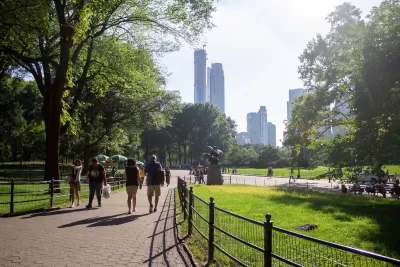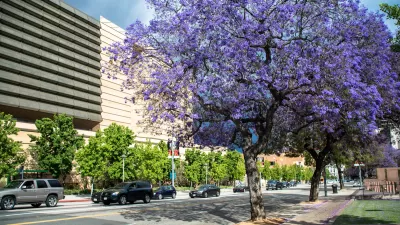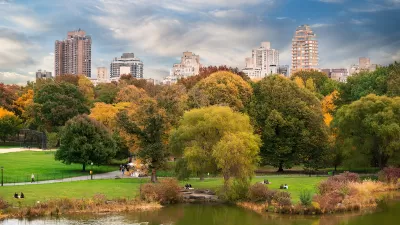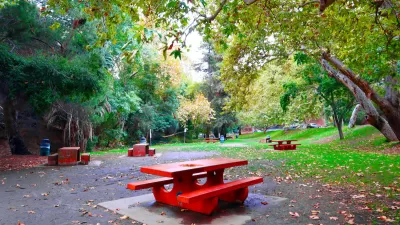A study comparing green space and walkability scores found that, without effective access to local parks, residents of greener neighborhoods don’t reap the health benefits.

Adding to the growing body of research about the built environment and public health, Thor Christensen describes a new study in American Heart Association News.
The study looked at two metrics assessing green space and walkability in neighborhoods to understand the relationship between them. While previous research indicates that people in neighborhoods with more green space tend to have lower heart disease risk, the new study reveals that this only holds true in neighborhoods that also have high walk scores—in other words, where residents can meaningfully access green spaces.
In fact, “When researchers looked simply at green space, they found cardiovascular diseases and risk factors were actually more common in people living in neighborhoods with a high NatureScore, compared with those living in less green neighborhoods.” Areas with the highest NatureScore and high walk scores showed a 9 percent lower chance of cardiovascular disease risk factors.
This leads to a logical conclusion: “To maximize the benefits of green space, people have to interact with nature,” says Dr. Omar Mohamed Makram. According to Dr. Ray Yeager, “There's a general notion that green space is good for health, but there's really not a lot of evidence to understand the many complexities involved between vastly different forms of green spaces, communities and built environments.”
The study underscores the need to cross-analyze metrics such as walk scores to understand the broader context and the reality behind the measure.
FULL STORY: For green spaces to be most beneficial to health, they need to be walkable

Planetizen Federal Action Tracker
A weekly monitor of how Trump’s orders and actions are impacting planners and planning in America.

San Francisco's School District Spent $105M To Build Affordable Housing for Teachers — And That's Just the Beginning
SFUSD joins a growing list of school districts using their land holdings to address housing affordability challenges faced by their own employees.

The Tiny, Adorable $7,000 Car Turning Japan Onto EVs
The single seat Mibot charges from a regular plug as quickly as an iPad, and is about half the price of an average EV.

Seattle's Plan for Adopting Driverless Cars
Equity, safety, accessibility and affordability are front of mind as the city prepares for robotaxis and other autonomous vehicles.

As Trump Phases Out FEMA, Is It Time to Flee the Floodplains?
With less federal funding available for disaster relief efforts, the need to relocate at-risk communities is more urgent than ever.

With Protected Lanes, 460% More People Commute by Bike
For those needing more ammo, more data proving what we already knew is here.
Urban Design for Planners 1: Software Tools
This six-course series explores essential urban design concepts using open source software and equips planners with the tools they need to participate fully in the urban design process.
Planning for Universal Design
Learn the tools for implementing Universal Design in planning regulations.
Smith Gee Studio
City of Charlotte
City of Camden Redevelopment Agency
City of Astoria
Transportation Research & Education Center (TREC) at Portland State University
US High Speed Rail Association
City of Camden Redevelopment Agency
Municipality of Princeton (NJ)





























